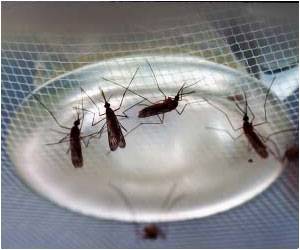Some of the mysteries of West Nile virus outbreaks were unlocked by UT Southwestern Medical Center researchers.

"When the vector index goes above 0.5 early - in June or July - large numbers of people are silently infected, and this is the best time to intervene," said Dr. Robert Haley, chief of epidemiology and professor of internal medicine at UT Southwestern and senior author of the study published in the July 17 edition of the Journal of the American Medical Association. "In years when the vector index did not rise until late July or August, impending outbreaks just sputtered - in late summer mosquito abundance declines, and mosquitoes become less active and stop biting as much."
The study also showed that determining the number of West Nile virus infections in people is a poor way to determine how to respond to an outbreak.
"After the infecting mosquito bite, it takes a week for the first symptoms to develop, a week to see people turning up at hospitals, and a week for laboratory confirmation of the diagnosis and reporting to health officials," Dr. Haley said. "That three-week time period is crucial. Acting early from the vector index rather than after human case reports and deaths mount up can nip an outbreak in the bud. However, if mosquito data are unavailable or a decision to intervene takes longer, later intervention may still be important to terminate the outbreak."
The analysis also found that milder winters and unusually warm spring temperatures contributed to epidemic years for West Nile, a major concern as global temperatures continue to warm, Dr. Haley said.
A fourth critical finding in the paper related census track data to the 2012 outbreak, demonstrating that areas of higher property values, housing density, and percentages of unoccupied homes were at greater risk. The researchers said that this result is likely due to fostering the types of environment and mosquitoes most likely to transmit the disease, which is carried more by house mosquitoes than forest mosquitoes. In Dallas County, their data showed year after year clustering in the Park Cities and North Dallas areas.
Advertisement
"Given the leading character of this index, epidemiologists and government officials can implement, in a more timely manner, preventative measures to reduce the impact of future West Nile Virus outbreaks," said Dr. Tom Fomby, professor of economics in the Dedman College of Humanities and Sciences at Southern Methodist University, who contributed statistical methods more commonly used in economics to evaluate the vector index.
Advertisement















